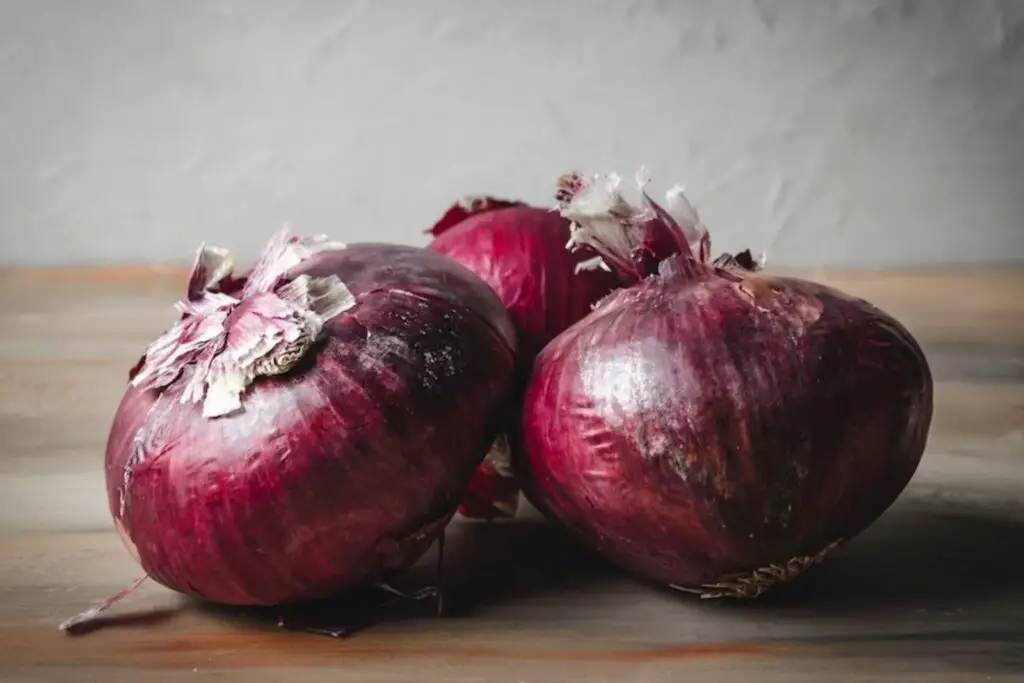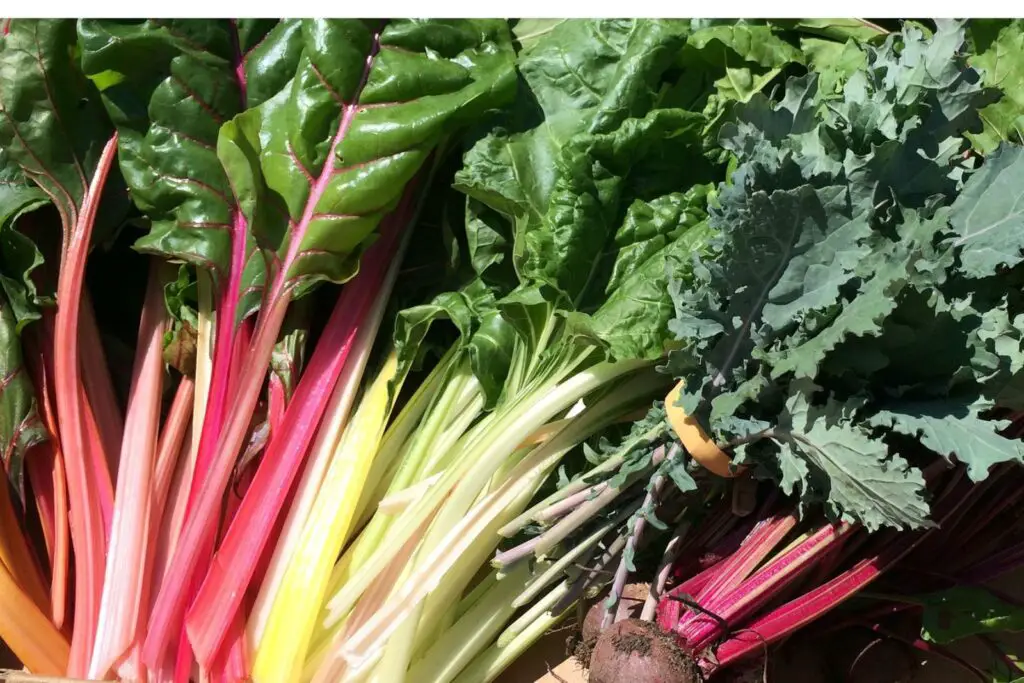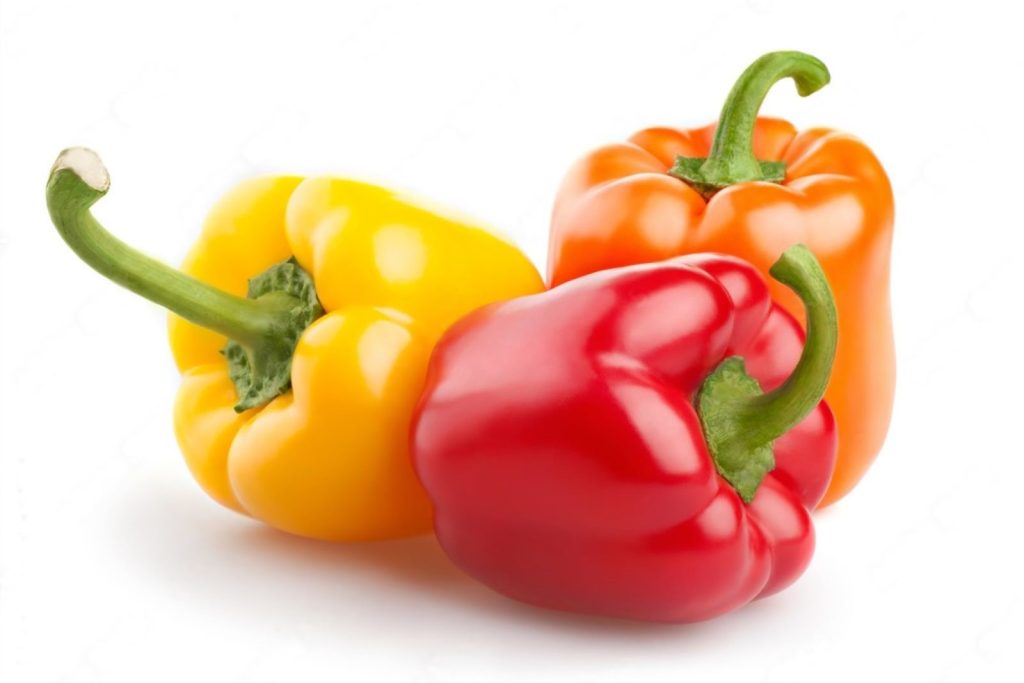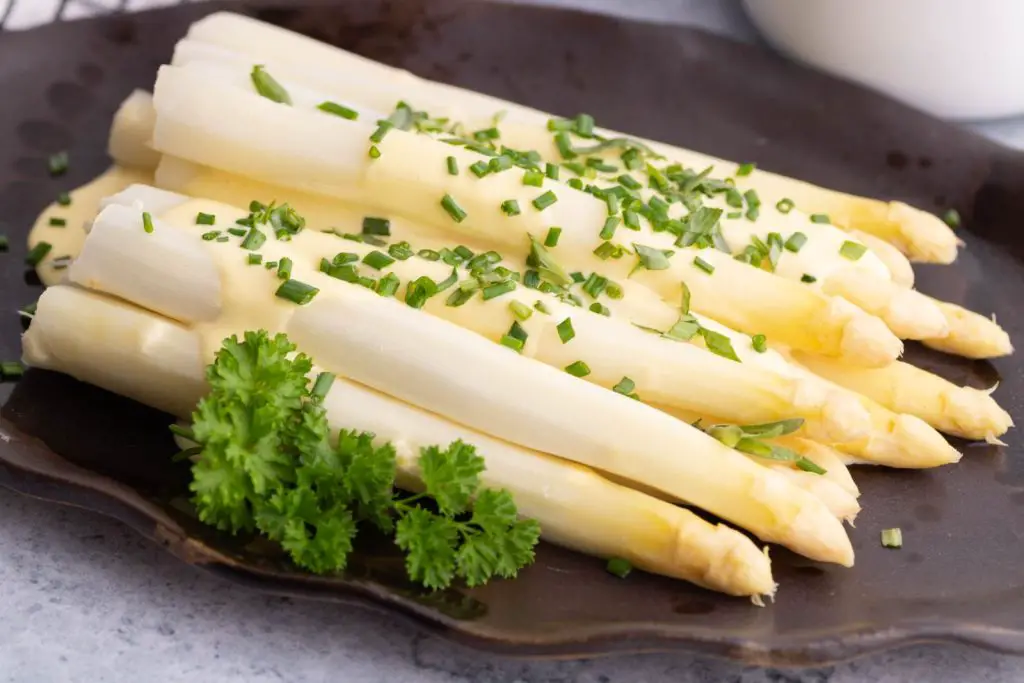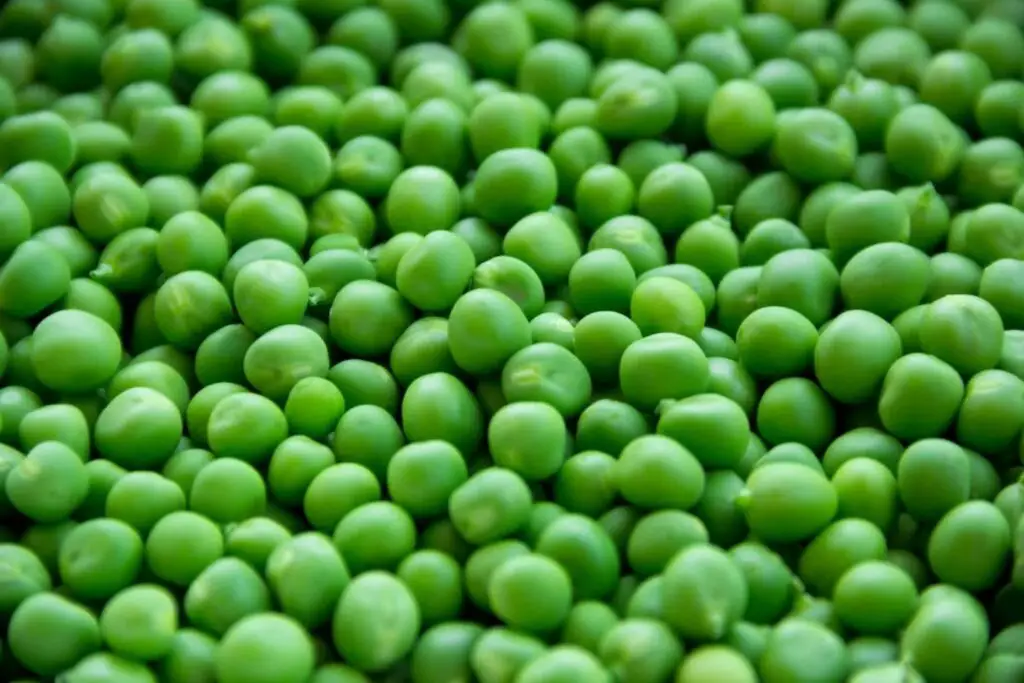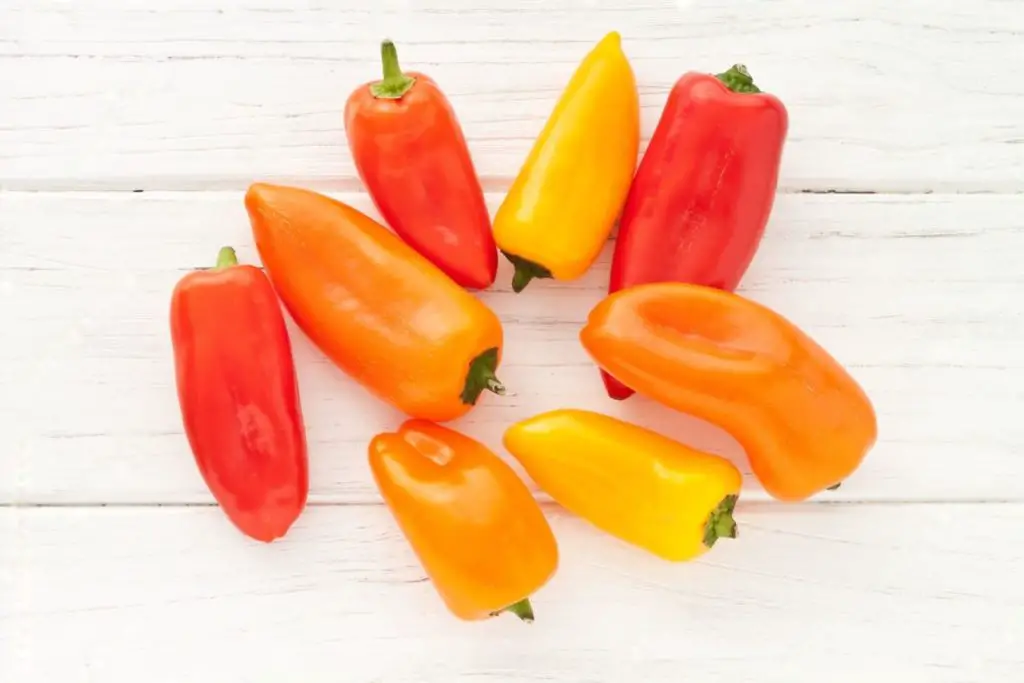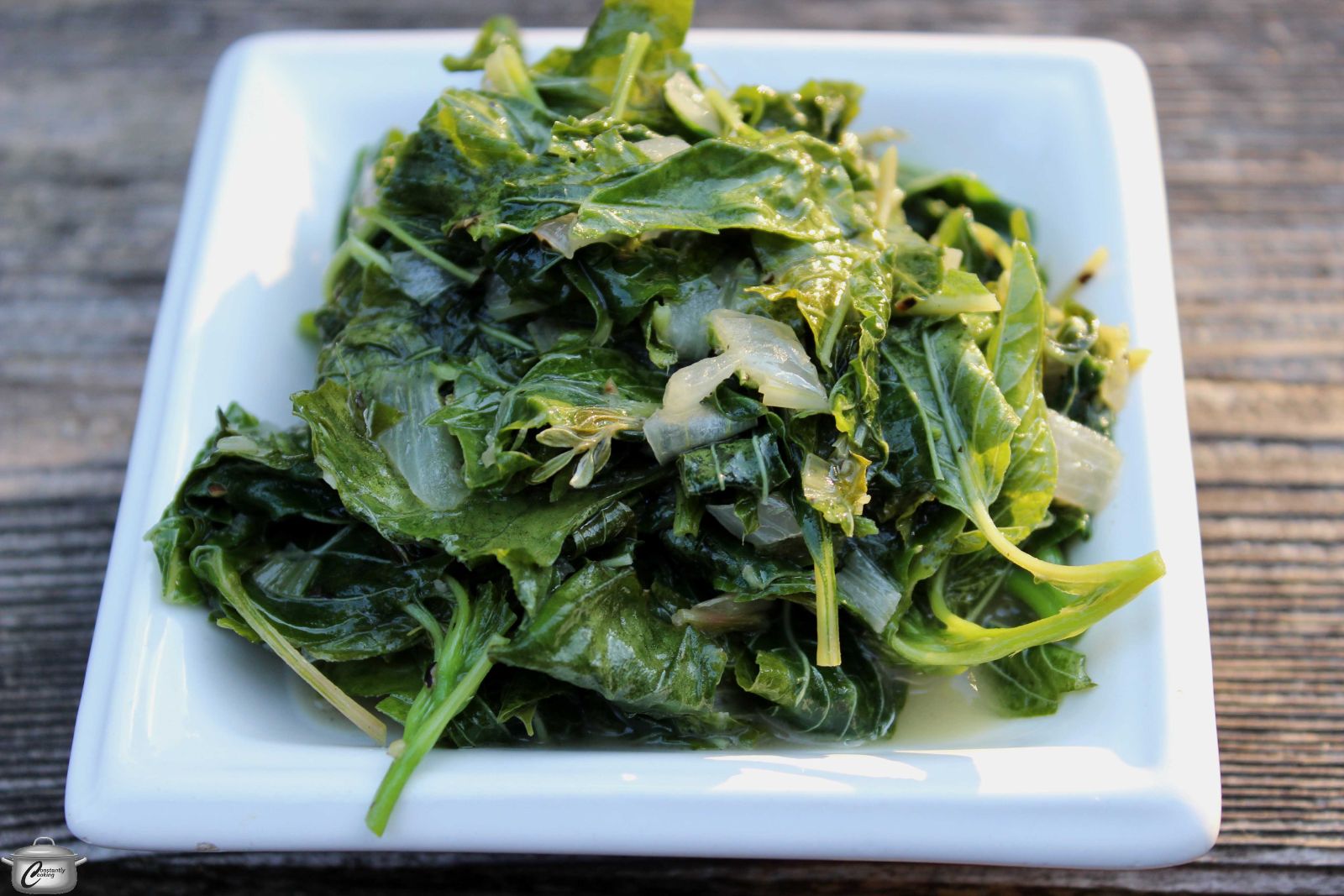
Callaloo is a leafy vegetable popular in Caribbean cuisine. It is known for its vibrant green color and rich flavor. Freezing callaloo allows you to enjoy this nutritious vegetable even when it’s out of season. By following a few simple steps, you can freeze callaloo while preserving its texture and taste. This article provides a comprehensive guide on how to freeze callaloo to ensure its optimal quality for future use.
Here’s a guide on how to freeze callaloo:
- Step 1: Select fresh callaloo leaves
- Step 2: Wash and trim the leaves
- Step 3: Blanch the callaloo leaves
- Step 4: Drain and dry the leaves
- Step 5: Arrange the leaves for freezing
- Step 6: Flash-freeze the callaloo leaves
- Step 7: Package and seal the callaloo leaves
- Step 8: Label and date the packages
- Step 9: Store in the freezer
Step 1: Select fresh callaloo leaves
To freeze callaloo effectively, it is crucial to start with fresh and vibrant leaves. Choosing high-quality callaloo leaves ensures that the frozen result will have the best texture and flavor.
Fresh callaloo leaves should have a vibrant green color, indicating their freshness. Avoid leaves that appear wilted, discolored, or have any signs of decay. These are indicators that the leaves may have already started to spoil, and freezing them in this state will result in poor quality.
Crispness is another important characteristic to look for in callaloo leaves. They should be firm and not limp or soft to the touch. A crisp texture indicates that the leaves are still fresh and will retain their structure during the freezing process.
Selecting fresh callaloo leaves is essential because the freezing process does not improve the quality of the leaves but rather helps preserve their current state. Freezing subpar or spoiled leaves will not revive them and may result in an undesirable texture and taste when thawed.
Step 2: Wash and trim the leaves
After selecting fresh callaloo leaves, the next step is to wash and trim them before freezing. This ensures that the leaves are clean and free from any dirt, debris, or impurities that may affect their quality.
Start by placing the callaloo leaves under cold running water. Gently rinse each leaf, rubbing them with your fingers to remove any surface dirt or dust. Pay attention to the front and back of the leaves, as well as the crevices between the stems.
Washing the callaloo leaves helps remove any potential contaminants that may be present, such as pesticides, soil residues, or bacteria. This step is essential for food safety and maintaining the integrity of the frozen callaloo.
Once the leaves are washed, inspect them for any tough stems or damaged parts. Using a sharp knife or kitchen scissors, trim off these undesirable sections. Tough stems can be fibrous and affect the texture of the cooked callaloo, so it’s best to remove them.
Trimming off damaged parts ensures that only the fresh and healthy portions of the leaves are frozen. It also helps prevent any spoiled or deteriorated sections from affecting the overall quality of the frozen callaloo.
Step 3: Blanch the callaloo leaves
Blanching callaloo leaves is an essential step in the freezing process as it helps preserve their color, texture, and nutrients. By briefly cooking the leaves in boiling water, enzymes that can cause spoilage and loss of quality are inactivated, while the vibrant green color is retained.
To begin, fill a pot with water and bring it to a rolling boil. The pot should be large enough to accommodate the callaloo leaves without overcrowding them. While the water is heating up, prepare a bowl of ice water, which will be used later to cool the blanched leaves rapidly.
Once the water reaches a boil, carefully add the callaloo leaves to the pot. The leaves should be fully submerged in the boiling water. Blanching time may vary depending on the size and thickness of the leaves, but typically, blanching callaloo leaves for about 2 minutes is sufficient.
Blanching time is crucial to strike a balance between preserving the color, texture, and nutrients of the callaloo leaves and avoiding overcooking them. Overblanching can result in the loss of vibrant green color and a mushy texture.
After the recommended blanching time, promptly remove the callaloo leaves from the boiling water. Using a slotted spoon or tongs, transfer the leaves to the bowl of ice water. The ice water bath rapidly cools down the leaves, halting the cooking process. This step helps retain the bright green color of the leaves and prevents them from becoming overcooked.
Blanching callaloo leaves is beneficial for their preservation. It deactivates enzymes that can cause discoloration and loss of nutrients, maintaining their vibrant appearance and nutritional value. This step sets the foundation for freezing callaloo leaves that will retain their quality and freshness even after being stored in the freezer.
Can I freeze callaloo without blanching?
Yes, you can freeze callaloo without blanching, although blanching is generally recommended for better quality preservation. Without blanching, the callaloo may still be frozen, but it may experience some textural changes and potential loss of color. The freezing process without blanching can lead to enzyme activity that may affect the overall quality of the callaloo.
Step 4: Drain and dry the leaves
After blanching the callaloo leaves, it is important to drain and dry them properly before freezing. This step helps to remove excess moisture and maintain the texture and quality of the leaves during freezing.
Using a slotted spoon or tongs, carefully remove the blanched callaloo leaves from the boiling water. It is important to transfer them immediately to a bowl of ice water. Placing the leaves in ice water serves two purposes: it rapidly cools them down and stops the cooking process, and it helps retain their vibrant green color.
The rapid cooling in ice water halts the enzymatic activity that can cause the callaloo leaves to lose their color and become overcooked. This step helps preserve the appealing green hue of the leaves, ensuring that they remain visually appealing even after freezing and thawing.
Once the callaloo leaves have been cooled in the ice water bath, they need to be drained. Allow them to sit in a colander or strainer for a few minutes to remove excess water. Gently shake the colander to facilitate drainage.
After draining, gently pat the leaves dry with paper towels. This step helps to remove any remaining moisture that can lead to ice crystals during freezing. Excess moisture can negatively affect the texture of the frozen callaloo leaves and may result in a loss of quality when thawed.
Step 5: Arrange the leaves for freezing
After blanching and drying the callaloo leaves, the next step is to arrange them in a single layer on a baking sheet or tray before freezing. This arrangement allows for even freezing and convenient portioning when needed in the future.
Take the blanched and dried callaloo leaves and spread them out on a baking sheet or tray. It’s important to ensure that the leaves are not overlapping or touching each other. Arranging them in a single layer prevents them from sticking together during freezing and allows for better airflow around each leaf.
Even freezing is crucial to maintain the quality and texture of the callaloo leaves. When the leaves freeze quickly and uniformly, it helps preserve their freshness and minimizes the formation of ice crystals. By avoiding overlap, the leaves freeze individually, making it easier to separate and use the desired portion later without having to thaw the entire batch.
Using a baking sheet or tray with a flat surface provides ample space to arrange the callaloo leaves without crowding them. If needed, you can use multiple baking sheets or trays to accommodate all the leaves while maintaining a single layer.
Can I freeze callaloo in individual portions?
Yes, you can freeze callaloo in individual portions. Freezing callaloo in individual servings allows for convenient and portion-controlled usage. It also helps in minimizing food waste by thawing and using only the required amount. To freeze in individual portions, divide the callaloo into desired serving sizes and place each portion in a separate airtight container or freezer bag. This way, you can easily thaw and use one portion at a time without having to thaw the entire batch.
Step 6: Flash-freeze the callaloo leaves
Once the callaloo leaves are arranged in a single layer on a baking sheet or tray, the next step is to flash-freeze them. Flash-freezing involves quickly freezing the leaves individually, which helps prevent them from sticking together and allows for easy portioning when needed.
Place the tray with the arranged callaloo leaves in the freezer and allow them to freeze for a few hours or until they are firm. The exact freezing time may vary depending on the thickness of the leaves and the temperature of your freezer, but typically, a few hours should be sufficient.
Flash-freezing the callaloo leaves individually is important for a couple of reasons. Firstly, it prevents the leaves from clumping together during freezing. When individual leaves freeze separately, they are less likely to stick together, which makes it easier to retrieve and use only the desired amount when you need them later.
Additionally, flash-freezing helps to maintain the overall quality of the callaloo leaves. By freezing them quickly, the formation of large ice crystals is minimized. Large ice crystals can cause cellular damage to the leaves and lead to a loss of texture and flavor when thawed. Flash-freezing helps to preserve the freshness and integrity of the leaves, ensuring that they retain their vibrant color and nutritional value.
It’s important to note that once the callaloo leaves are firm and fully frozen, you can transfer them to a more suitable long-term storage container like freezer-safe bags or airtight containers. This step allows you to free up the baking sheet or tray for other uses.
Step 7: Package and seal the callaloo leaves
After flash-freezing the callaloo leaves, it’s time to package and seal them properly for long-term storage in the freezer. This step ensures that the frozen callaloo leaves remain protected from freezer burn and maintain their quality over time.
Transfer the frozen callaloo leaves from the baking sheet or tray into freezer-safe containers or freezer bags. Freezer-safe containers can be plastic containers with airtight lids, while freezer bags should be specifically designed for freezing food.
When packaging the callaloo leaves, it’s important to remove any excess air from the containers or bags before sealing them tightly. Excess air can contribute to freezer burn, which can degrade the quality of the frozen leaves over time. Freezer burn occurs when moisture within the food evaporates and freezes on the surface, causing dry and discolored patches.
To remove excess air, press the freezer bags gently to push out as much air as possible before sealing them. For containers, make sure the lids are securely fastened to create an airtight seal.
Proper packaging and sealing are crucial steps in maintaining the quality of the frozen callaloo leaves. By preventing freezer burn and creating an airtight environment, you ensure that the callaloo leaves stay fresh and flavorful until you’re ready to use them in your favorite dishes.
What type of container is best for freezing callaloo?
The best type of container for freezing callaloo is an airtight, freezer-safe container or freezer bags. These containers should be able to seal tightly to prevent air and moisture from entering, which helps to preserve the quality of the callaloo during freezing. Ensure that the containers are made of materials specifically designed for freezing to avoid freezer burn. Properly sized containers or bags that allow for minimal empty space are ideal to prevent excess exposure to air.
Step 8: Label and date the packages
Labeling each package of frozen callaloo leaves with the contents and date of freezing is an important step in organizing your freezer and ensuring that the callaloo leaves are used within a reasonable timeframe. Proper labeling provides valuable information and helps you keep track of your frozen inventory.
When labeling the packages, clearly write “Callaloo Leaves” or a similar description on each container or freezer bag. This will make it easy to identify the contents without the need to open or defrost the packages.
In addition to labeling the contents, it’s crucial to include the date of freezing on each package. Write down the month and year when the callaloo leaves were frozen. This information allows you to monitor the storage time and ensures that you use the oldest leaves first. Frozen callaloo leaves are best consumed within a certain timeframe to maintain their quality and flavor.
By labeling and dating the packages, you establish an organized system in your freezer. It helps you keep track of your frozen callaloo leaves inventory and ensures that you can easily find and utilize them when needed. This practice also prevents the callaloo leaves from being forgotten or overlooked, reducing the chances of them going to waste.
Additionally, proper labeling allows you to plan your meals effectively. You can refer to the labeled packages to determine the quantity of callaloo leaves available and incorporate them into your recipes accordingly. This helps you make the most of your frozen callaloo leaves and ensures a seamless cooking experience.
Step 9: Store in the freezer
After properly packaging and labeling the callaloo leaves, it’s time to store them in the freezer. Ensuring proper storage conditions is crucial to maintain the quality, flavor, and nutritional value of the frozen callaloo leaves.
Place the packaged callaloo leaves in the freezer, making sure they are stored in a flat position. Storing them flat allows for efficient use of freezer space and helps prevent them from being crushed or damaged by other items in the freezer.
It’s important to note that the ideal temperature for freezing callaloo leaves is below 0°F (-18°C). Freezing at this temperature ensures that the leaves freeze quickly and effectively, preserving their texture, color, and nutrients.
Maintaining a consistent freezing temperature is essential for maintaining the quality of the callaloo leaves. Fluctuations in temperature can lead to the formation of larger ice crystals, which can affect the texture and flavor of the leaves. Therefore, it’s important to keep the freezer temperature at a steady level throughout the storage period.
To optimize storage conditions, avoid placing the callaloo leaves near the freezer door or in areas where temperature fluctuations are more likely to occur. Keep them in the coldest part of the freezer, such as the back or bottom shelves, to ensure a consistent freezing environment.
By storing the callaloo leaves in the freezer at the proper temperature and in a flat position, you are setting the stage for long-term storage. This ensures that the callaloo leaves remain in optimal condition until you’re ready to use them in your favorite recipes.
Remember to periodically check the freezer temperature and maintain it below 0°F (-18°C) to guarantee the best storage conditions for the callaloo leaves. With proper storage, you can enjoy the freshness and flavor of callaloo even when it’s out of season.
How long can I freeze callaloo in the freezer?
You can freeze callaloo for up to 3 to 6 months in the freezer. To maintain its quality, it is important to store it in airtight containers or freezer bags to prevent freezer burn and moisture loss. Make sure to label the containers with the date of freezing to keep track of its freshness. After the recommended freezing period, while it may still be safe to consume, the texture and flavor of the callaloo may deteriorate over time.
Other related questions
How do I defrost callaloo?
To defrost callaloo, the best method is to transfer it from the freezer to the refrigerator. Place the frozen callaloo in a covered container or a sealed plastic bag to prevent any cross-contamination or moisture loss. Allow it to thaw slowly in the refrigerator for approximately 24 hours. Once thawed, use the callaloo within 2-3 days and ensure it is thoroughly heated before consuming.
Can I refreeze previously thawed callaloo?
It is generally not recommended to refreeze previously thawed callaloo. Each time you freeze and thaw food, it can affect its quality and texture. Thawing causes some moisture loss and changes the cell structure of the callaloo, potentially leading to a loss in taste and texture. Additionally, refreezing can increase the risk of bacterial growth and foodborne illnesses. It’s best to thaw only the amount of callaloo you intend to use to minimize the need for refreezing.
How do I know if my frozen callaloo has gone bad?
To determine if your frozen callaloo has gone bad, there are a few signs to look out for. Firstly, check for any unusual discoloration or changes in texture. If the callaloo appears excessively mushy, slimy, or has developed ice crystals, it may indicate spoilage. Additionally, a strong unpleasant odor is another indication of spoilage. If you observe any of these signs, it’s best to discard the frozen callaloo to avoid the risk of foodborne illness and choose a fresh batch.
Can I use frozen callaloo with the fresh ones?
Yes, you can use frozen callaloo with fresh ones. However, it’s important to note that the texture of frozen callaloo may be slightly different compared to fresh callaloo due to the freezing and thawing process. When using a combination of frozen and fresh callaloo in a recipe, consider adjusting the cooking time accordingly. Frozen callaloo can be a convenient option when fresh callaloo is not readily available, but be mindful of the potential differences in texture and adjust your cooking method accordingly.
Does freezing callaloo affect its taste and texture?
Freezing callaloo can affect its taste and texture to some extent. The freezing process can cause cell damage, leading to a slight change in texture upon thawing. The callaloo may become slightly softer or mushier compared to its fresh counterpart. Additionally, freezing can also affect the flavor of callaloo, potentially resulting in a subtle loss of freshness. However, with proper storage and handling, the overall impact on taste and texture can be minimized, allowing frozen callaloo to still be enjoyable and suitable for various recipes.
Can I freeze callaloo with other ingredients, such as onions and garlic?
Yes, you can freeze callaloo with other ingredients like onions and garlic. However, it’s important to consider the texture and flavor changes that may occur. Onions and garlic can become softer and milder in flavor after freezing. If you prefer to maintain the distinct texture and taste of onions and garlic, you may want to consider adding them fresh to the callaloo dish when you cook it after thawing. Alternatively, you can sauté the onions and garlic separately, freeze them in separate containers, and add them to the callaloo when reheating to preserve their individual characteristics.
Can I freeze callaloo that has already been seasoned or spiced?
Yes, you can freeze callaloo that has already been seasoned or spiced. However, keep in mind that the flavors may intensify during freezing and thawing. It’s recommended to slightly under-season the callaloo before freezing, as the flavors may concentrate during storage. This allows for adjustments in seasoning when reheating or incorporating the callaloo into recipes after thawing. Additionally, ensure that the callaloo is stored in airtight containers or freezer bags to prevent cross-contamination with other foods in the freezer.
Can I use frozen callaloo directly in recipes without thawing it first?
Yes, you can use frozen callaloo directly in recipes without thawing it first, depending on the recipe and cooking method. Some recipes, such as soups, stews, or stir-fries, may allow for direct use of frozen callaloo. The cooking process will naturally thaw and cook the callaloo simultaneously. However, for recipes that require specific textures or precise cooking times, it’s generally better to thaw the callaloo first to ensure even cooking and prevent potential inconsistencies in the dish.
Can I freeze callaloo soup or stew?
Yes, you can freeze callaloo soup or stew. Soups and stews, including callaloo-based ones, are generally suitable for freezing. However, it’s important to allow the soup or stew to cool completely before freezing. Transfer it to airtight containers, leaving some headspace for expansion, or use freezer-safe bags. Thaw and reheat the frozen callaloo soup or stew gently on the stovetop or in the microwave, stirring occasionally, until it reaches the desired serving temperature.

